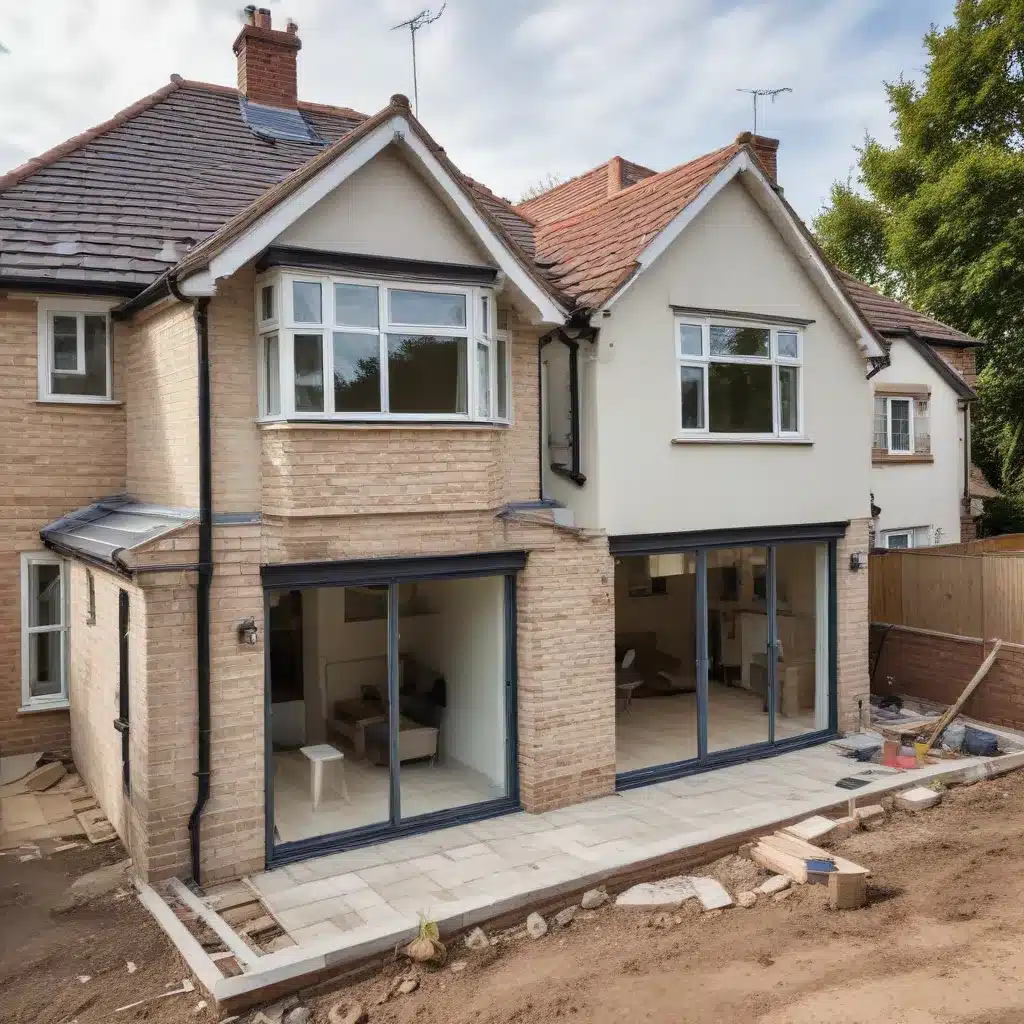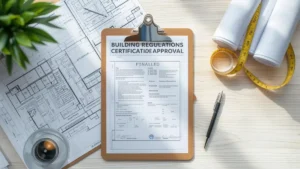Share this post:

Considering a home extension? Understand when you need permission, what may be exempt, how to apply, and the pitfalls to avoid—so your project stays smooth, compliant, and stress-free.
Need planning advice fast?
Get clear answers on extensions, drawings, and permissions without the stress.
Considering a home extension? Before you break ground on your project, it’s essential to navigate the somewhat murky waters of planning permission. While the idea of expanding your living space is exciting, the legalities can be daunting. Whether you’re dreaming of a new kitchen, a sunroom, or a two-storey addition, understanding when you need permission and the costs involved is crucial.
Understanding Planning Permission: What You Need to Know
Planning permission means getting formal approval from your local planning authority before beginning your project. This ensures your extension complies with building standards and local policies. Without it, you risk enforcement action or even demolition.
Types of Home Extensions That Require Planning Permission
You will usually need permission if your extension:
- Exceeds permitted size or height limits (Planning Portal guidance)
- Is in a conservation area or attached to a listed building
- Creates new dwellings or alters the property’s use
- Significantly impacts neighbours or the street scene
For more detail, see our Buckinghamshire guide (many principles apply nationwide).
Common Home Extensions That May Not Need Planning Permission
Some projects fall under Permitted Development rules. Examples:
- Small rear kitchen extensions
- Loft conversions that don’t alter the roofline
- Garden outbuildings (subject to limits)
The Planning Permission Application Process Explained
The process typically involves preparing planning drawings, submitting via the Planning Portal, paying the relevant planning permission cost, and awaiting council consultation and decision.
Key Factors Influencing Planning Permission Decisions
- Impact on neighbours (light, privacy, noise)
- Aesthetic fit with surroundings
- Environmental considerations (flood risk, biodiversity)
Consequences of Building Without Planning Permission
Ignoring the rules may lead to enforcement, fines, and even demolition. It also affects your property value and can block future sales. Retrospective applications are possible but risky.
How to Check if You Need Planning Permission
Use the Planning Portal’s interactive guides or check with your local authority. Unsure? Get tailored advice from Plans Made Easy.
Tips for a Successful Planning Permission Application
- Use clear drawings and professional support
- Respect neighbours and reduce objections
- Include sustainable features
Alternatives to Planning Permission: Permitted Development Rights
Some single-storey rear extensions or lofts fall under PD. For clarity, see our dedicated guide: Do I Need Planning Permission?
Conclusion: Navigating the Planning Permission Landscape for Your Home Extension
Securing approval can seem daunting, but with clear information, accurate drawings, and a professional approach, it’s manageable. Explore more in our complete planning permission guide and related resources below.
Next steps & useful guides
- Do I Need Planning Permission?
- Planning Permission Drawings – Complete Guide
- Making Plans – Costs, Drawings & Approval
- Do I Need Plans for My Kitchen Extension?
- Do I Need Planning Permission for an Extension?
- Kitchen Extension – Planning Rules
- Do I Need Planning Permission for a Garage?
- Planning Permission Cost
- Planning Permission Buckinghamshire
Ready to move your project forward?
Plans Made Easy can prepare compliant plans, manage submissions, and guide you from idea to approval.
🛠️ Next week: Garage Conversions — what you need to know before building inside your home.

What Is a Regularisation Certificate – And Do You Need One?
A Regularisation Certificate is retrospective Building Regulations approval from your local authority Building Control, used when work was done without proper sign-off. This guide explains when you need one, how the application works, typical costs and timescales, and how it compares with a completion certificate and indemnity insurance—so you can resolve missing paperwork calmly and correctly.

Building Regulations Certificate Explained: When You Need One and How to Get It
A building regulations certificate confirms that work on your home meets UK Building Regulations. Whether it’s a boiler, extension or structural change, this guide explains when you need one, how to get it, and what to do if it’s missing.

How Much Does a Double Storey Extension Cost in the UK? Full Breakdown
Wondering how much a double storey extension costs in 2025? This guide breaks down typical UK prices per m², full build estimates, wrap-around options, and what extras like drawings and approvals will add. Know what’s realistic before you start.

Construction Company Scope of Work: Deliverables, Responsibilities & Must-Have Items
A clear construction company scope of work outlines exactly what your builder will do — and what they won’t. This guide explains what to include, how it differs from a schedule or spec, and how to avoid disputes by getting your scope right before work starts.

Building Plans Architecture: Floor Plans, Elevations & Sections Explained
Understanding building plans architecture is key to getting your extension or remodel approved. This guide explains the role of floor plans, elevations, sections and site drawings — and when you need them for planning or Building Regs approval. Clear advice for UK homeowners planning a project.

Plans Cost: What’s Included, Typical Fees & Hidden Extras Explained
Wondering how much your home project plans will cost? This guide breaks down what’s included in plans, typical UK prices for extensions, lofts and remodels, and key extras to watch for. Learn how to compare quotes and avoid hidden fees.
Categories

Performance Verified ✅
This page meets PME Optimisation Standards — achieving 95+ Desktop and 85+ Mobile PageSpeed benchmarks. Verified on

